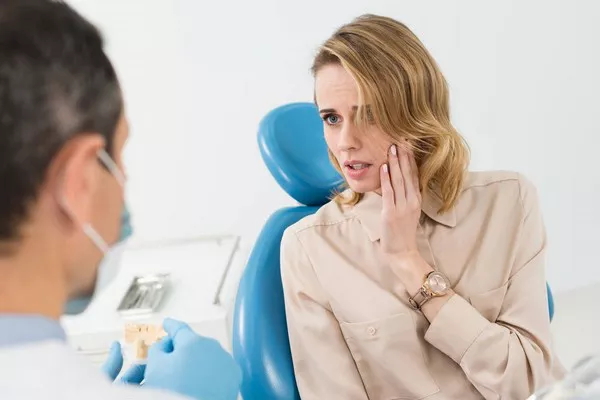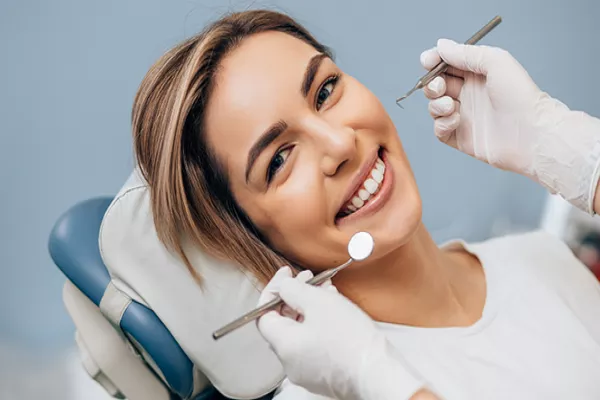Orthodontic treatment, including the use of braces, has the power to transform smiles and improve dental health. However, the question arises: Can you get braces if you have periodontitis, a condition that affects the supporting structures of the teeth? This article aims to shed light on the relationship between braces and periodontitis, the considerations for individuals with gum disease, and the potential orthodontic options available to them.
Understanding Periodontitis
Periodontitis, often referred to as gum disease, is a progressive condition that affects the gum tissues, bone, and ligaments that support the teeth. It typically begins with gingivitis, an inflammation of the gums caused by the accumulation of plaque. If left untreated, gingivitis can progress to periodontitis, leading to gum recession, pocket formation, bone loss, and even tooth mobility.
Orthodontic Treatment and Periodontitis
Orthodontic treatment, such as braces, focuses on aligning teeth to achieve a functional bite and an aesthetically pleasing smile. While orthodontics can play a crucial role in improving dental alignment and bite issues, the presence of periodontitis introduces certain considerations.
Can You Get Braces with Periodontitis?
The answer to whether you can get braces with periodontitis depends on the severity of the gum disease, the stage of treatment, and the collaboration between orthodontists and periodontists. Here are some important factors to consider:
Periodontal Evaluation: Before starting orthodontic treatment, individuals with gum disease should undergo a thorough periodontal evaluation. This assessment helps determine the extent of gum disease and its impact on treatment decisions.
Disease Severity: Mild cases of gingivitis may not pose significant challenges to orthodontic treatment. However, if periodontitis is advanced and has caused extensive bone loss or tooth mobility, alternative orthodontic options may be explored.
Treatment Planning: Orthodontists and periodontists work collaboratively to develop a treatment plan that addresses both orthodontic needs and gum health. In some cases, periodontal treatment may be required before orthodontics can commence.
Managing Gum Health: Effective management of gum disease is essential throughout orthodontic treatment. Poor oral hygiene can exacerbate periodontitis and hinder treatment progress.
Hygiene Maintenance: Individuals with braces and periodontitis must be committed to meticulous oral hygiene practices to prevent plaque buildup around brackets and wires.
Orthodontic Options for Individuals with Periodontitis
For individuals with periodontitis who still desire orthodontic treatment, alternative options may be considered:
Invisalign: Invisalign uses clear aligners to gradually move teeth. The removable nature of aligners allows for thorough oral hygiene maintenance.
Lingual Braces: Lingual braces are placed on the backside of teeth, making them less visible. Proper oral hygiene is crucial due to the proximity to the tongue and palate.
Orthognathic Surgery: In cases of severe malocclusions and periodontitis, orthognathic surgery may be recommended to correct jaw and bite issues.
Combination Treatment: Some individuals may benefit from a combination of periodontal therapy and orthodontics, with the two treatments being sequenced appropriately.
Preventing Complications During Orthodontic Treatment
Individuals with periodontitis undergoing orthodontic treatment should follow these guidelines to prevent complications:
Collaboration of Specialists: Orthodontists and periodontists should work closely to monitor progress and address any concerns promptly.
Oral Hygiene: Maintain excellent oral hygiene, including regular brushing, flossing, and possibly using an antimicrobial mouthwash.
Professional Cleanings: Regular professional dental cleanings are essential to remove plaque and calculus.
Check-Ups: Schedule regular visits to both orthodontists and periodontists to monitor gum health and treatment progress.
Dietary Considerations: Avoid sticky, hard, or chewy foods that could damage braces and increase the risk of gum irritation.
Conclusion
The decision to get braces with periodontitis requires a careful assessment of gum health, disease severity, and treatment goals. Collaboration between orthodontists and periodontists is essential to develop a comprehensive treatment plan that addresses both orthodontic needs and gum health. While mild cases of gum disease may not hinder orthodontic treatment, advanced periodontitis may necessitate alternative orthodontic options or additional periodontal therapy. By following proper oral hygiene practices, maintaining regular dental check-ups, and adhering to treatment recommendations, individuals with periodontitis can achieve successful orthodontic outcomes and enjoy the benefits of a healthier, more aligned smile.
Related Topics:






























